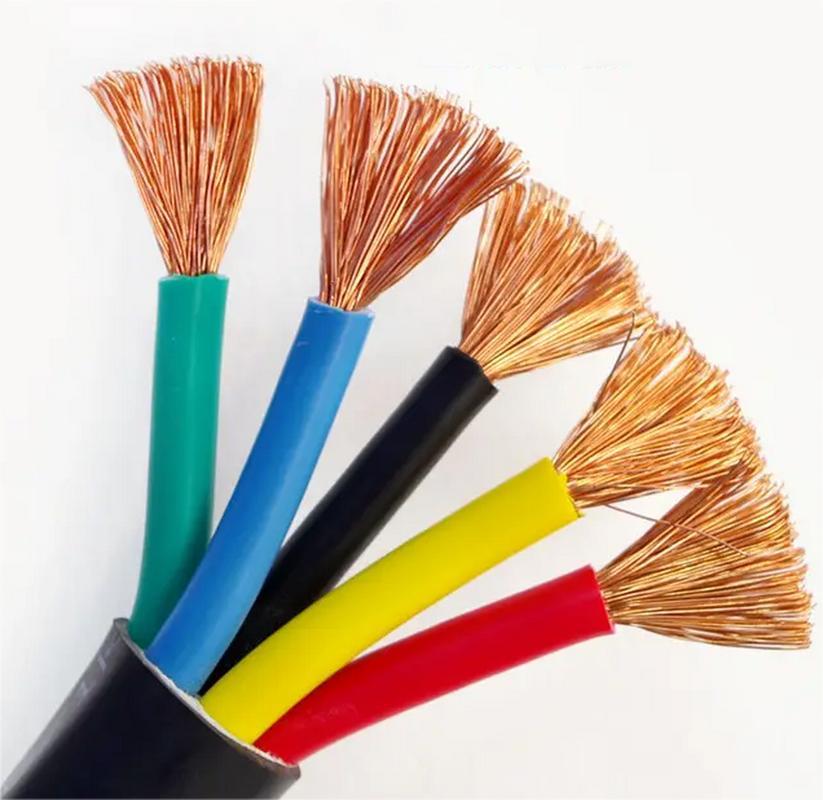Abstract:
In the construction of power systems, cable selection directly affects power supply reliability and service life. Based on the IEEE 835 standard and global power engineering practice experience, this article systematically analyzes the five core dimensions of current load calculation, voltage matching principle, laying scenario optimization, environmental adaptability selection, and economic evaluation. It cites technical manuals of international manufacturers such as ABB and Prysmian, and combines typical cases of China Southern Power Grid to provide a selection decision model with practical value. Scientific selection can reduce operation and maintenance costs by 30% and extend cable life by 40%.

1. Accurate calculation and dynamic planning of current load
According to the IEC 60287 standard, the cross-sectional area of the conductor must meet the dual requirements of current carrying capacity and thermal stability. Taking an industrial park project as an example, the peak current is calculated to be 385A by the dynamic load prediction method. By looking up the table in Appendix B of GB50217 “Design Specifications for Power Engineering Cables”, a 240mm² copper core cable is finally selected. Special attention should be paid to the effect of harmonic current (referenced in IEEE 519 standard) on conductor heating. When THD>15%, the cross section should be enlarged by 10-15%.
Authoritative reference: IEEE 835 cable current carrying capacity calculation standard https://standards.ieee.org/ieee/835/4311/
2. Accurate matching of voltage levels and insulation selection
The rationality of selection is verified by the voltage drop formula ΔU=√3×I×(Rcosφ+Xsinφ)×L. Taking 35kV cross-linked polyethylene cable as an example, the insulation thickness must reach more than 10.5mm (reference GB/T 12706.3), and a three-layer co-extrusion process is used to ensure uniform distribution of the electric field. The practice of the National Grid of the United Kingdom shows that the use of a semi-conductive shielding layer in medium-voltage cables can reduce partial discharge by 70%.
Industry data: The global medium-voltage cable market size increased by 6.5% year-on-year (data source: Grand View Research) https://www.grandviewresearch.com/industry-analysis/medium-voltage-cables-market
3. Differentiated response strategies for laying scenarios
• Direct burial laying: Mechanical protection (galvanized steel belt armor) and anti-termite treatment (nylon sheath) need to be considered • Pipeline corridor laying: Use low-smoke halogen-free flame-retardant cable (in accordance with GB/T 19666) • Bridge laying: Use non-magnetic stainless steel wire armor (reduce eddy current loss) • Submarine cable: Double-layer PE sheath + lead alloy waterproof layer design
Case reference: The Hong Kong-Zhuhai-Macao Bridge uses a special 127/220kV cross-linked polyethylene submarine cable with a laying depth of 40 meters https://www.nexans.cn/industrial-solutions/offshore-wind.html
4. Composite solutions for environmental adaptability
Environmental factor matching matrix:
| Environmental Parameter | Technical Requirement | Typical Product |
|---|---|---|
| High temperature (>90°C) | Heat-resistant XLPE insulation | DOWLEX™ |
| Low temperature (<-40°C) | Elastomer sheath | Borealis™ |
| Chemical corrosion | Fluoroplastic outer sheath | DuPont Teflon® FEP |
| High humidity | Longitudinal water-blocking structure | Prysmian HPT® technology |
Authoritative test: UL 1581 weather resistance certification standard https://www.ul.com/services/wire-and-cable-testing
5. Life cycle economic evaluation model
Using LCC (Life Cycle Cost) analysis method:
Initial investment (materials + construction) + operation and maintenance costs (loss + maintenance) + failure costs (power outage losses) Comparison with 10kV line:
| Model | Initial Cost (CNY) | Annual Loss (CNY) | Total Cost in 20 Years (CNY) |
|---|---|---|---|
| Aluminum core 240mm² | 800,000 | 120,000 | 3,200,000 |
| Copper core 150mm² | 950,000 | 80,000 | 2,550,000 |
Industry report: High-quality cables can reduce line losses by 40% (International Copper Association data) https://copperalliance.org/
Summary:
Scientific cable selection requires the construction of a three-dimensional decision-making system of “technology-economy-environment”. Through accurate current calculation to match conductor specifications, select insulation systems based on voltage gradients, optimize protection structures for laying scenarios, and adopt composite technical solutions based on environmental characteristics, the full-cycle cost optimization is finally achieved through the LCC model. It is recommended that engineering units establish a selection decision support system, integrate standard databases such as IEC, GB, and IEEE, and introduce digital twin technology for virtual verification, which can improve selection efficiency by more than 50% and ensure safe and economical operation of the power system.
